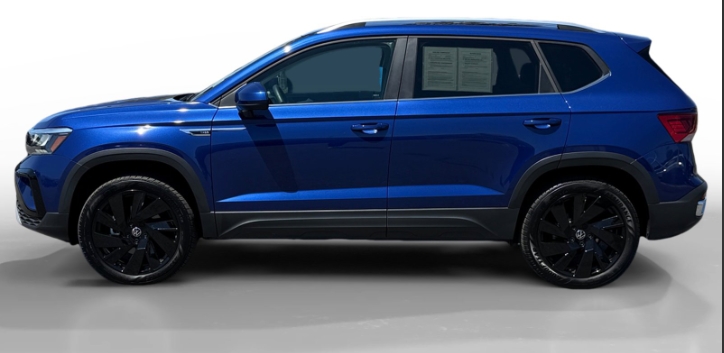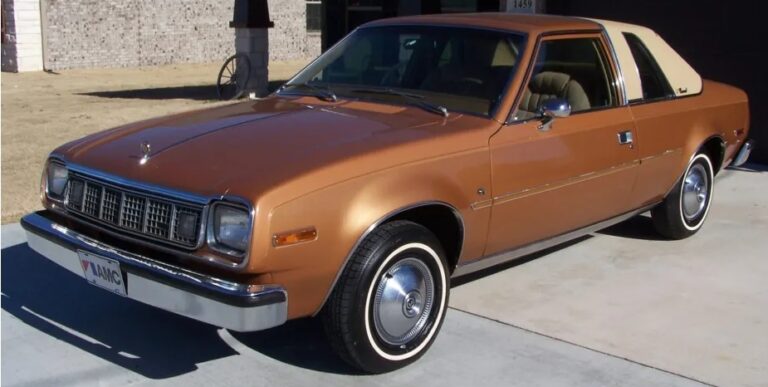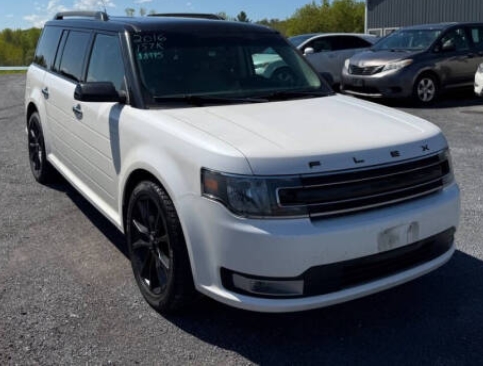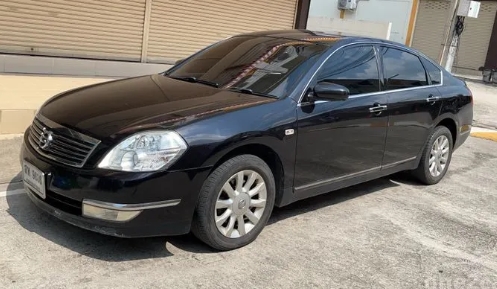The Volkswagen Taos: Charting the Evolution of a Compact Conqueror
In the ever-evolving landscape of automotive design and consumer demand, Volkswagen has consistently sought to fill niches and cater to diverse needs across its global lineup. The Volkswagen Taos, a relatively recent but already significant entrant, represents a fascinating case study in adapting to market trends and offering a compelling blend of practicality, technology, and Volkswagen’s signature driving dynamics. While its history is brief, its evolution, from its initial conception to its current iterations, provides a glimpse into Volkswagen’s strategy for the crucial compact SUV segment.
The Genesis of the Taos: Addressing a Market Gap (Pre-2021)
The story of the Taos doesn’t begin with its official debut in North America. Its roots can be traced to Volkswagen’s global platform strategies and the growing demand for smaller, more affordable SUVs. Recognizing the burgeoning popularity of subcompact and compact SUVs worldwide, Volkswagen embarked on developing a vehicle that would slot neatly below the Tiguan, offering a more accessible entry point into their SUV family.
While the Tiguan has grown in size and stature over its own evolution, the need for a truly compact option became evident. The Taos was conceived as a solution, designed to be agile, fuel-efficient, and packed with the modern amenities that buyers in this segment expect. Its development was intertwined with Volkswagen’s modular transverse matrix (MQB) platform, a flexible architecture that allows for the creation of a variety of vehicles from a common set of components, optimizing manufacturing efficiency and engineering commonality.
The Unveiling: A North American Debut (2021 Model Year)
The Volkswagen Taos officially made its grand entrance into the North American market for the 2021 model year. This marked a pivotal moment, introducing a fresh contender into a highly competitive segment. The Taos was positioned as a stylish, practical, and value-oriented SUV designed to appeal to a broad range of buyers, from young families to urban commuters.
.
THIS is GOOD stuff if your car is in need:

.
Initial Model and Trim Levels (2021 Model Year):
From its inception, the Taos was offered with a focused yet well-equipped range of trim levels, emphasizing a balance of features and affordability. The initial offerings included:
- S: The base model, designed to provide essential functionality and modern technology at an attractive price point. Even in its most basic form, the Taos S was equipped with features like an 8-inch touchscreen infotainment system with Apple CarPlay and Android Auto, LED headlights, and a suite of driver-assistance features.
- SE: Positioned as the mid-range option, the SE trim added more comfort and convenience features. This typically included upgrades like a larger 10.25-inch digital cockpit display, a wireless phone charger, heated front seats, and improved interior materials. The SE also often saw the addition of more advanced driver-assistance systems as standard or available options.
- SEL: The top-tier SEL trim offered the most premium experience. This level boasted features such as a panoramic sunroof, leatherette seating surfaces, an 8-speaker BeatsAudio sound system, and the Discover Media infotainment system with navigation. The SEL also typically included the most comprehensive suite of advanced safety features.
Powertrain and Drivetrain (2021 Model Year):
A key characteristic of the early Taos was its powertrain. Volkswagen opted for a 1.5-liter turbocharged four-cylinder engine as the sole engine option in North America for its initial launch. This engine was lauded for its fuel efficiency and peppy performance in this size of vehicle. Mated to this engine was either a conventional eight-speed automatic transmission for front-wheel-drive (FWD) models or a seven-speed dual-clutch automatic transmission (DSG) for all-wheel-drive (AWD) variants. The availability of AWD was a significant selling point for consumers in regions with varied weather conditions.
Evolution and Refinements: The Years Following 2021
The Volkswagen Taos, in its nascent stages, proved to be a competent and well-received addition to the lineup. However, like any vehicle aiming for long-term success, it has undergone subtle but significant refinements in the years since its debut. These adjustments often reflect customer feedback, evolving technological standards, and Volkswagen’s ongoing commitment to improvement.
2022 Model Year:
The 2022 model year saw the Taos solidify its footing, with minor adjustments primarily focused on packaging and feature availability. While no radical redesigns occurred, Volkswagen often fine-tuned the standard and optional equipment across the trim levels. This could include:
- Enhanced Safety Feature Availability: Volkswagen continued to emphasize safety, and the 2022 model year may have seen certain advanced driver-assistance systems (ADAS) become standard on more trim levels or become more readily available as options. Features like adaptive cruise control, blind-spot monitoring, and emergency braking are increasingly expected in this segment.
- Infotainment System Tweaks: While the core infotainment systems remained similar, software updates or minor enhancements to user interface and functionality could have been implemented to improve the user experience.
- Cosmetic Adjustments: Minor cosmetic changes, such as new exterior paint colors or slightly revised wheel designs, are common in the second year of a model’s lifecycle to maintain freshness.
The core powertrain (1.5L turbo-four with 8-speed auto for FWD and 7-speed DSG for AWD) and the general trim structure (S, SE, SEL) remained consistent for the 2022 model year.
2023 Model Year:
The 2023 model year continued the trend of iterative refinement. Volkswagen’s strategy for the Taos has been one of building upon a strong foundation rather than a complete overhaul. Key developments often seen in this year, or foreshadowed by it, include:
- Further Standardization of Technology: As technology rapidly advances, manufacturers often move desirable features from optional packages to standard equipment. For the 2023 Taos, this could have meant more connectivity features, enhanced infotainment capabilities, or more driver-assistance aids becoming standard across more trims.
- Package Revisions: Volkswagen often bundles features into “packages” to offer value to consumers. The 2023 model year might have seen these packages reconfigured, perhaps offering new combinations of popular options or introducing new packages altogether.
- Potential for Minor Styling Updates: While a full facelift is typically reserved for later in a model’s life cycle, subtle exterior or interior styling tweaks are not uncommon in the third year. This could involve revised grille designs, new wheel options, or updated interior trim materials.
The powertrain and the fundamental trim structure (S, SE, SEL) were generally carried over for the 2023 model year, reinforcing the Taos’s established identity.
2024 Model Year and Beyond:
As the Taos continues its journey, the 2024 model year represents another step in its ongoing evolution. Volkswagen’s approach is likely to remain focused on:
- Continued Technology Integration: Expect further enhancements in infotainment, connectivity, and driver-assistance technologies. Over-the-air (OTA) updates for software and potentially even for some vehicle functions are becoming increasingly prevalent, and the Taos is poised to benefit from this.
- Market Responsiveness: Volkswagen will undoubtedly monitor sales figures, competitor offerings, and consumer feedback to make strategic adjustments. This could involve tweaking feature sets, offering special edition models, or making minor powertrain or efficiency improvements.
- Maintaining Value Proposition: The Taos’s success hinges on its ability to offer a compelling combination of Volkswagen quality, modern features, and competitive pricing. Future iterations will likely strive to maintain this critical balance.
While specific details for future model years are subject to change, the trajectory of the Taos suggests a commitment to continuous improvement within its established framework.
The Taos’s Place in the Volkswagen Lineup:
The Volkswagen Taos occupies a crucial position in the brand’s North American SUV portfolio. It serves as the entry-level gateway, offering a more compact and affordable alternative to the larger Tiguan. Its dimensions make it particularly well-suited for urban environments, where maneuverability and ease of parking are paramount. Yet, its available AWD and practical interior space also make it a viable option for those venturing beyond the city limits.
Compared to its larger sibling, the Tiguan, the Taos typically:
- Offers a Shorter Wheelbase: This contributes to its more agile handling.
- Features a Different Powertrain Strategy: The dedicated 1.5-liter turbo engine for the Taos contrasts with the Tiguan’s often larger or more powerful engine options.
- Targets a Slightly Different Buyer: While both appeal to families and individuals seeking an SUV, the Taos often attracts those prioritizing affordability, fuel efficiency, and a more compact footprint.
The Driving Experience:
A hallmark of Volkswagen vehicles is their refined driving dynamics, and the Taos is no exception. Despite its subcompact classification, it typically exhibits a composed and comfortable ride. The steering is usually well-weighted, providing a sense of connection to the road without being overly heavy. The turbocharged engine, while not a performance behemoth, provides adequate acceleration for everyday driving and confident highway merging. The choice between the FWD 8-speed automatic and AWD 7-speed DSG transmission offers drivers options depending on their priorities and driving conditions.
Conclusion: A Promising Future for the Compact Conqueror
The Volkswagen Taos, though a relatively young vehicle in the automotive world, has already demonstrated a clear evolutionary path. From its initial launch in 2021 with its well-defined S, SE, and SEL trim levels and its efficient 1.5-liter turbocharged engine, it has been a testament to Volkswagen’s ability to adapt and innovate in key market segments. The subsequent 2022 and 2023 model years have seen it solidify its position through iterative refinements, focusing on enhancing technology, safety, and overall value.
As the Taos continues into 2024 and beyond, its evolution is likely to be characterized by ongoing technological integration, responsiveness to market demands, and a steadfast commitment to its core strengths: practicality, efficiency, and the engaging driving experience that has become synonymous with the Volkswagen brand. The Taos is more than just a compact SUV; it’s a symbol of Volkswagen’s forward-thinking strategy, designed to conquer the hearts and garages of a diverse and discerning automotive audience. Its journey is one of continuous improvement, ensuring it remains a compelling and competitive choice for years to come.







